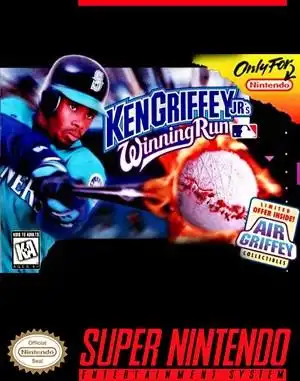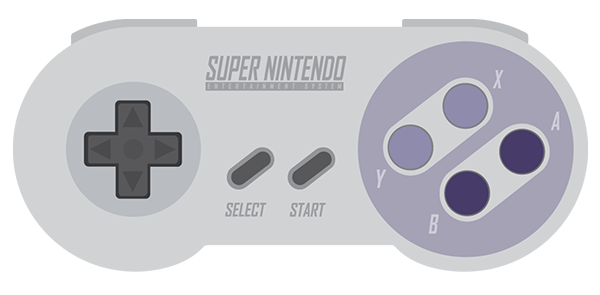Remember the thrill of popping a fresh cartridge into your Super Nintendo, especially when it was a late-era release pushing the console's limits? If you were a baseball fan in the mid-'90s, that feeling likely came courtesy of Ken Griffey Jr.’s Winning Run SNES. Developed by the legendary Rareware (yes, that Rare), this sequel arrived after the massive success of the original Ken Griffey Jr. Presents Major League Baseball, promising even more arcade-style diamond action. Did it live up to the hype? For many of us who spent countless hours pitching, fielding, and swinging for the fences, the answer is a resounding yes. Let's take a trip back to the virtual ballpark.
Stepping Up to the Plate: Gameplay Modes
Winning Run wasn't just about hitting bombs; it packed a surprising amount of content for its time. You weren't stuck with just exhibition matches (though those were great for quick fun). The game offered a solid lineup of modes:
- Exhibition: Quick play with any of the 28 included (mostly fictional names, thanks to lack of full MLBPA license, but you knew who they were!). Fun fact: the game sometimes threw in alternate uniforms, a cool visual touch back then.
- MLB League (Season): Dive into a full season! You could adjust the length, and completing a 162-game grind even unlocked expansion teams. It featured player trading based on performance, adding a layer of strategy. Best of all? Up to eight players could participate in the same season. Couch co-op/multiplayer competition at its finest!
- Challenge Mode: A linear progression mode offering specific scenarios.
- World Series: Jump straight into the championship series.
- All-Star Game: Pit the league's best against each other.
- Home Run Derby: The ultimate test of your power-hitting skills.
While some stadiums were generic compared to the first game, little details like the ivy at "Wrigley" were still charmingly rendered from the batter's view.
Swinging for the Fences: Controls & Feel
This is where Winning Run truly shined and earned its five-star reviews from many critics. Rare nailed the arcade feel with controls that were intuitive yet offered depth.
- Pitching: Easy to select pitch types and aim, with special pitches adding variety.
- Fielding: Fluid movement with satisfying leaping catches and powerful "super-throws" to gun down runners. The automatic fielder selection could occasionally be finicky, but overall, it felt responsive.
- Hitting: Directional control allowed you to aim your swings, adding strategy beyond just timing.
- Base Running: Simple and effective controls made managing runners a breeze.
The gameplay was fast-paced and smooth, retaining that addictive arcade charm that made the first game so popular while refining the mechanics. It was easy to pick up and play, but mastering the nuances of pitching and hitting kept you coming back.
On the Diamond: Graphics & Sound
For a late-generation SNES title (released in 1996!), Ken Griffey Jr.’s Winning Run looked and sounded fantastic. Rare's signature cartoony, vibrant style was on full display.
- Visuals: Large player sprites, detailed backgrounds (even if generic), and smooth animations made the game feel alive. The animated umpire adding personality was a great touch!
- Sound: Praised for its "CD-quality sound," the game offered immersive audio that pulled you into the ballpark atmosphere. The cracks of the bat, the crowd noise, and the umpire's calls felt surprisingly rich for the hardware.
It was a visual and auditory upgrade over its predecessor, showcasing Rare's technical prowess on the aging 16-bit system.
Why We Remember It: Legacy & Nostalgia
Ken Griffey Jr.’s Winning Run SNES wasn't just another licensed sports game; it was a polished, fun, and highly replayable title that arrived towards the end of the SNES's life cycle. While it lacked the full MLBPA license of the first game, its refined gameplay, multiple modes (especially the robust season mode for multiplayer), and technical presentation secured its place in retro gaming history.
Years later, it's still remembered fondly by SNES enthusiasts and sports game fans alike. It's appeared on lists recognizing top SNES titles and late-era console gems, a testament to its lasting appeal. It captured the excitement of baseball with an accessible baseball classic arcade style that's still a blast to play today, whether you're chasing down fly balls or launching moonshots in the Home Run Derby.
FAQs
Q: Is Ken Griffey Jr.'s Winning Run better than the first Ken Griffey Jr. SNES game? A: It's subjective! Winning Run generally improved graphics, sound, and added more gameplay modes. However, the first game had official MLB team names and stadiums, which some prefer. Winning Run refined the core arcade gameplay.
Q: Does Ken Griffey Jr. himself appear in the game? A: Yes, Ken Griffey Jr. is the featured player and appears in the game, though most other player names are fictional due to licensing.
Q: What company developed Ken Griffey Jr.'s Winning Run SNES? A: The game was developed by Rareware, the acclaimed studio behind other SNES hits like Donkey Kong Country.
Q: Can I play Ken Griffey Jr.'s Winning Run today? A: Yes, you can play the game on original SNES hardware, or via emulation on modern platforms.
Stepping back into Winning Run is a pure dose of '90s arcade sports fun. It's a reminder of a time when licensed games could be genuinely great, powered by talented developers like Rare. If you've never played it, or haven't dusted off that cartridge in years, it's definitely worth taking another swing.


